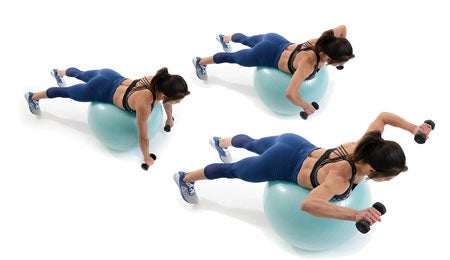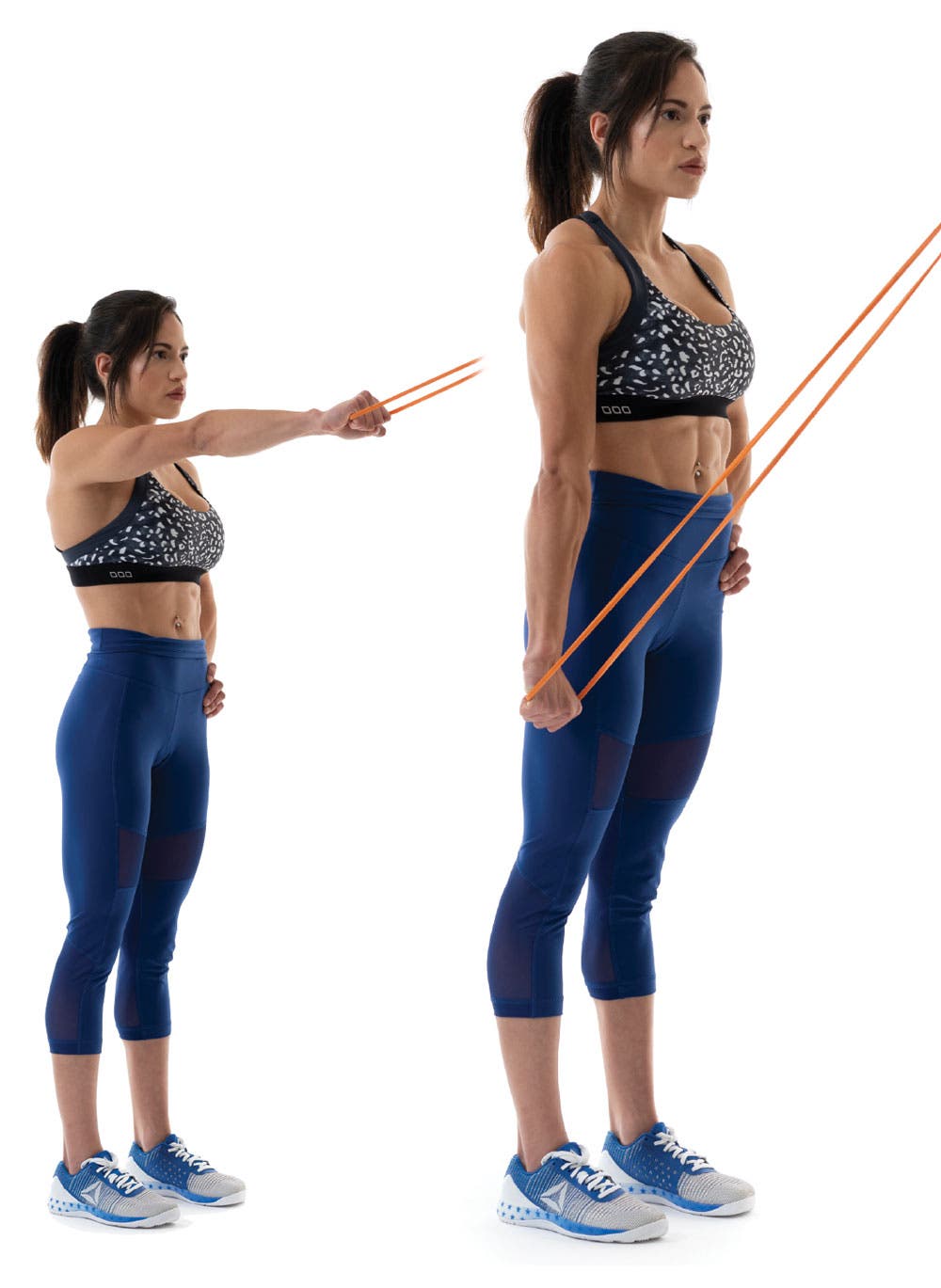Two Must-Try Rotator-Cuff Moves


Form: Single-Arm Straight-Arm Band Pulldown
Four little muscles make up the rotator cuff that surrounds each scapula: the supraspinatus, infraspinatus and teres minor on the posterior, and the subscapularis on the anterior. Though the prime movers for shoulder extension are actually the teres major and larger back muscles, the infraspinatus and teres minor help keep the head of the humerus in place as you move your arm down past your torso. Straight-arm pulldowns train this action without the assistance of your biceps and will give you killer definition on either side of your racer-back tank.

Anchor a resistance band at shoulder height or slightly above, and stand with your feet hip-width apart facing the anchor. Keep your knees slightly bent and your core engaged to avoid tipping forward or using momentum.
Hold one handle with your palm down and your arm at shoulder height, then step away from the anchor. A band provides variable resistance, meaning there is less tension at the top than at the end range of motion, so play with your distance from the anchor to find that sweet spot.
Keeping your arm straight, pull it down and back until it comes just past your torso but not so far that your shoulder and scapula tip forward, which allows internal rotators like your pecs to assist and detracts from the work of the rotator cuff.
Hold the peak contraction for one to two seconds, then release slowly back to the start and try to establish a mind-to-muscle link in the area right behind your armpit. Use your other hand to lightly tap this area if you’re having trouble finding the connection.
This move primes your rotator cuff for stabilization, and one to two easy sets can be done before bigger moves like rows and presses. But if you’re really trying to target a weak spot, save your more intense sets for the end of your workout.

Function: Stability-Ball Wide Row and Rotation
The ability to control the eccentric phase of internal rotation is a very important rotator-cuff function. Imagine a tennis player letting her arm whip around as she serves the ball. The rotator cuff has to decelerate her arm after making contact with the ball, otherwise her shoulder would fly right out of its socket. Similarly, every time you throw a medicine ball, flip a tire or do a push-up, the rotator cuff governs all that momentum and helps maintain control of your shoulder. This move is similar to a traditional internal/external rotation exercise, but with the arm abducted to 90 degrees, it performs the action in a new range, helping stabilize your shoulder and prevent injury.

Lie facedown with your belly on a stability ball and your toes positioned outside shoulder width for balance. Brace your core and squeeze your glutes to maintain control of the ball, which will want to roll around underneath you.
The goal is to teach these tiny rotator-cuff muscles how to resist and control eccentric forces without too much stress, so use a light set of weights. Take an overhand grasp on the dumbbells on either side of the ball with your palms facing rearward.
Keep your head neutral and your spine aligned as you drive your elbows toward the ceiling, squeezing your shoulder blades together and lifting until your upper arms are parallel to the floor and make 90-degree angles at your elbows. If you feel any pressure or pinching in your shoulders, lower your elbows slightly to prevent the head of the humerus from crushing those interior muscles and tendons.
Holding your elbows in position, rotate your arms to lift the weights in front of you beside your ears until your forearms are parallel to the floor. Avoid flexing and/or extending your wrists. Keep them straight and locked, as if delivering a punch, and move only at the shoulder joint. Pause briefly and then lower slowly back to the wide row position, then back to the floor.
The goal here is not to “feel the burn.” Fatigue can cause your form to falter and put undue stress on these small muscles, so quit while you still have a couple of reps in the tank, rest and then do another set when you’ve recovered.
You also can perform this movement standing, starting with your elbows lifted and your arms at 90 degrees. Try holding a resistance band or cable and use multiple angles to improve strength, endurance and control in all planes of motion.